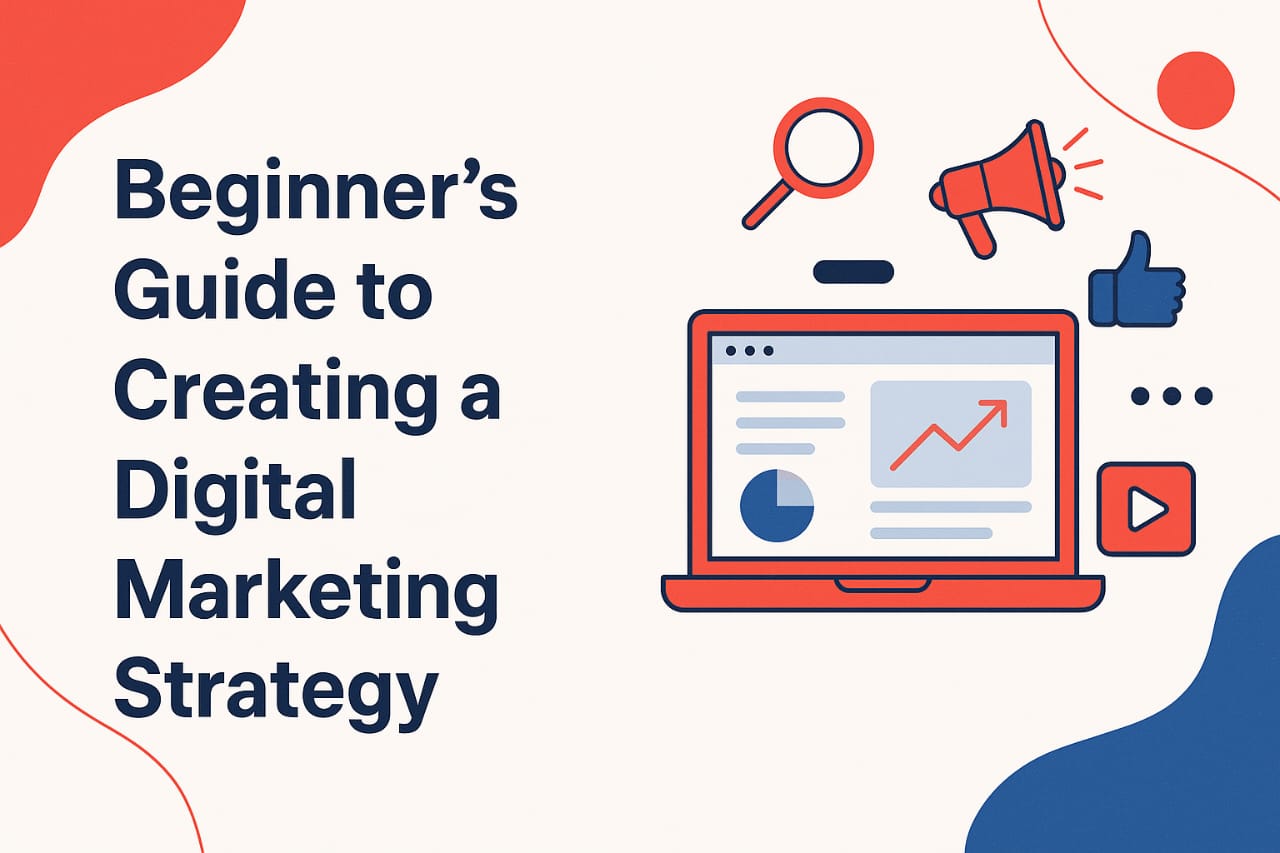
If you’re new to the world of digital marketing, creating a solid strategy can feel
overwhelming. But don’t worry—once you break it down, it’s much easier than it seems.
A good digital marketing strategy helps you attract the right audience, build brand
awareness, and drive results. Here’s a simple guide to help you get started.
- Know Your Goals
Before anything else, ask yourself—what do you want to achieve with digital marketing?
Is it more website traffic, higher sales, more leads, or stronger brand recognition? Set
clear and measurable goals like:
●Increase website traffic by 30% in 3 months
●Gain 500 new Instagram followers in 1 month
●Generate 50 leads per month through Google Ads - Understand Your Audience
If you’re new to the world of digital marketing. Make an effort to profile the audience you
are targeting with marketing content. Make sure to check on their:
●Age, gender, and their approximate geographical area
●Interests and online activity
●Problems to be solved and requirements
Tools such as social media insights, Google Analytics, and even customer surveys can
Help out greatly. - Choosing The Appropriate Platform
You don’t have to be in all places; just focus on where your target market is. For
instance:
Younger demographics and visual content do well on TikTok and Instagram.
Focus on 2-3 as the starting point and keep your expansion goals for later so that you do
not overwhelm yourself by trying to do everything at once. - Create Engaging Content
Digital marketing runs off content, which is its heartbeat. Mark content that motivates,
entertains, or educates your audience. Here are some suggested content types you can
try:
●Blog posts
●Customer testimonials
●How-to guides
●Videos and reels
●Infographics
Your audience blows attention to how you mix different visual elements for content
relevancy and simplicity. - Optimize for SEO
SEO, or search engine optimization, is critical to have your website rank on Google.
Choose seo pertinent keywords to blogs, page titles, and meta description. As important,
have fast loading speeds and a mobile-friendly site that is easy to navigate through. Also
ensure constant updates to your content. - Use Email Marketing
Do not underestimate the potential of emails. Create an email list for those expression
interest and share relevant updates to them with offers and tips. Senior members of your
target audience range so that it and their scalability remains high to gain trust while
driving sales with personalized neat looking socio-marketing emails. - Track and Improve
Marketing done online is not a one time effort. Make use of Google Analytics, Meta
Business Suite and HubSpot to evaluate how your strategies are performing. Pay
attention to the following metrics:
●Traffic on the site
●Rate of conversion
●Level of engagement
●Profit earned in relation to investment
In case something needs to be improved, change your content and strategy. Experiment
and improve as you go.
Conclusion
Creating a digital marketing strategy may take some effort in the beginning, but it’s worth
it. Start small, stay consistent, and don’t be afraid to learn as you go. With the right
approach, you’ll see real growth for your business or brand.
